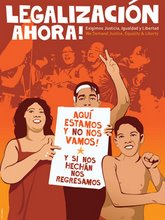href="http://www.washingtonpost.com/wp-dyn/content/article/2007/02/18/AR2007021801340.html" target="_blank" onclick="return top.js.OpenExtLink(window,event,this)">http://www.washingtonpost.com/wp-dyn/content/article/2007/02/18/AR2007021801340.html
By Sylvia Moreno
Washington Post Staff Writer
Monday, February 19, 2007; Page A03
SILVERBELL, Ariz. -- Among the statuesque saguaro cactuses in the desert south of this old mining town lies the remnant of a crime scene that federal authorities say signals a troubling and escalated level of violence associated with the human smuggling trade.
Sometime in the pitch-black early morning hours of Feb. 8, a pickup packed with illegal immigrants from Central America, on their way to a presumed stash house in Phoenix, was attacked by two men shooting high-powered assault weapons. The four witnesses found tell conflicting stories about the time, place and other details about the shooting. The abandoned vehicle and two bodies were found near Silverbell, 70 miles north of the Arizona-Mexico border; another body and two survivors were found on the side of a dirt road eight miles north of the mining town.
Three immigrants -- a woman and two men -- were killed, and another woman was seriously wounded by three rounds from an AK-47. An alleged smuggler, whose hand was shattered by gunfire during the attack, is under arrest. The truck driver and another two dozen immigrants remain missing. Inside the yellow police tape strung across prickly pear and ocotillo cactuses lay staples the immigrants carried on their trek across the desert: a package of bologna and a plastic water jug. Personal effects taken from the dead, including blood-smeared pictures of children left behind in Guatemala and El Salvador, are now sealed away as evidence in the Pima County Sheriff's Department.
t is not clear whether this attack was the work of rival smugglers, extremist vigilantes or what are known in Spanish slang here as bajadores-- crews of bandits who steal human cargo throughout southern Arizona and from Phoenix stash houses to extort ransom from their families in Latin America or the United States. What is unusual, said Alonzo Peña, the new U.S. Immigration and Customs Enforcement special agent in charge of Arizona, is the recent frequency of the violence, the fact these incidents resulted in deaths and that they occurred in the desert, where the crime scenes are hard to find within the thousands of acres of sand and brush.
"There's more and more sophisticated, high-powered assault-type weapons being used . . . and there are back-to-back incidents," Peña said.
Smuggling violence has increased in Arizona during the past six months, the byproduct of a clampdown by federal immigration authorities, Peña said. The U.S.-Mexico border in Arizona remains the busiest illegal entry point in the country, but the increased concentration of Border Patrol agents and National Guard troops stationed there during the past year has made it harder to cross.
In the past 18 months, enforcement operations have been stepped up in Arizona, with strong backing from Gov. Janet Napolitano (D), who declared a state of emergency in Arizona's border counties in 2005 because of illegal immigration.
Those efforts appear to be working. Border Patrol statistics show that arrests of illegal immigrants in the Tucson sector, which includes 135 miles of border, dropped 11 percent overall last year and are down 9 percent since October, compared with the same period the year before. Deaths from heatstroke and dehydration in the Arizona desert just north of the border, which averaged 160 annually between 2000 and 2005, also dropped slightly last year, said Pima County Medical Examiner Bruce Parks.
The result, Peña said, is that a cargo of illegal immigrants that makes it across the border is worth more now. "This is raising the cost to do business for the smugglers," Peña said about the stricter border enforcement. "The commodity is more valuable, so [rival] smugglers are trying to get hold of it."
A few days after the assault near Silverbell, two men were found dead in the desert west of Phoenix, which local authorities believe was connected to illegal smuggling. In late January, a truckload of illegal immigrants was ambushed in the desert near Eloy by several armed men wearing camouflage clothing and berets, surviving immigrants said. The driver was killed and one immigrant was wounded.
Just last week Pima County authorities found another body in the desert. Officials estimated it had been dead for two weeks and said they believed it was also connected to human smuggling.
"Unfortunately, this is a common occurrence," said Pima County Sheriff Clarence Dupnik, whose detectives are charged with solving the homicide near Silverbell. "This is not an aberration. And to be honest, the chances of solving this is not good."
With illegal immigrants facing increased risk of capture at or near the border, smuggling organizations are waiting for them to get well north of the border before hijacking them, usually at gunpoint. For some years, such incidents have been seen in and around Phoenix, where the bajadores break into immigrant stash houses to take over what is known as the "collections process." While immigrants wait for relatives and friends to send the agreed-upon smuggling fees so they can move on to their final destinations farther north or west, the bajadores take the group hostage and begin extorting exorbitant ransom fees.
One such violent crew, known as the Franco organization, with roots in Sinaloa, Mexico, made its mark four years ago in Phoenix by taking hostage more than 50 illegal immigrants in a stash house and viciously beating them, burning them with cigarettes and putting plastic bags over their heads while holding them at gunpoint.
A month ago, one Franco bandit was sentenced in U.S. District Court in Phoenix to life in prison plus seven years on a conviction of conspiracy, hostage-taking, harboring illegal aliens, and possessing and using a firearm to commit violence. Another participant in the hostage-taking had been sentenced previously, and three other defendants are set for sentencing next month.
Between April 2005 and July 2006, 65 similar cases involving Phoenix stash houses were discovered by federal agents, Peña said. Still, the recent desert shootings, resulting in fatalities, stand out.
"Sadly, violence has become the norm," said Angel Rascón, a special agent in the Bureau of Immigration and Customs Enforcement's Phoenix office. But when they "end up happening in such frequency and in death, that's alarming."
skip to main |
skip to sidebar

















Blog Archive
-
▼
2007
(540)
-
▼
February
(124)
- Raymondville: Inside the Largest Immigration Priso...
- Human Rights Groups Call for Closure of Texas Jail...
- "I Want To Be Free": 9-Year-Old Canadian Citizen P...
- Canadian Council for RefugeesMedia ReleaseFor Im...
- Detention solution found wanting in Britain
- Foreign Workers Can Stay Longer in Canada, Tories Say
- More Mexican labour needed in oil patch, executive...
- Canada's hottest new import? Employees
- The Battle Over Immigration - U$A
- Families Behind Bars: Jailing Children of Immigrants
- Which Babies Are Real Americans?
- Court strikes down security certificates
- Top court rules against security certificates
- UN Grills Canada
- US War Resisters and the Legality of the Iraq War
- Report on the State of Racism in Canada
- UN wants guarantee that Canada won't repeat Arar e...
- Groups condemn immigration raids
- Appeals sought for refugees on run
- Amir Kazemian Accepted
- Canada turns crucial corner
- Charkaoui hails high court ruling
- Nafta Should Have Stopped Illegal Immigration, Right?
- Border Crackdown Spawns Violence. More Deaths Occu...
- Apatrides et menacés de déportation: Relance des p...
- Stateless & Deported: Re-launch of bi-weekly picke...
- Show Anti-Raciste dans Hochelaga
- La Cour suprême va se prononcer sur les certificat...
- Community Sanctuary: Celebrating Struggles for Jus...
- Sanctuaire Communautaire: Une célebration des lutt...
- Radio-Canada: Amir Kazemian est libre
- PC: Un réfugié iranien vivant dans une église est ...
- Winnipeg Free Press: Refugee family's children all...
- Globe and Mail: Iranian refugee granted asylum
- Emprisonnement de présumé terroriste
- Latvian national in St. John's church loses immigr...
- Iranian Refugee Arrested and Forced out of Sanctua...
- Protest groups seek abolition of controversial sec...
- Canadian boy caught in Texas detention
- La Cour ordonne la libération de Mahjoub, à la vei...
- Mohammad Mahjoub, le plus ancien détenu en vertu d...
- Mahjoub ordered freed pending government review of...
- Mohammad Mahjoub, Longest Held of Canada's Secret ...
- Terrorism suspect given hope by MPs' offer of aid
- Deportation Cases Not Properly Reviewed
- Gunmen Open Fire on Illegal Immigrants
- Kenyan-born man has credentials to be registered p...
- MPs meet with detainees on hunger strike
- (((( We send this article with the note that these...
- GUANTANAMO NORTH - DAY 80 OF HUNGER STRIKE
- Draconian' anti-terror laws must go
- National Union urges opposition to Anti-Terrorism Act
- The Don't Ask Don't Tell campaign is working on ma...
- Proceedings on hunger strike, Standing Committee o...
- Syria bars Iraqis refugees, crisis worsens
- US Doesn't Sign Ban on Disappearances
- U.S. May Be Mishandling Asylum Seekers, Panel Says
- Refugee agreement hurts queers
- UPDATE ON HUNGER STRIKES AT GUANTANAMO NORTH
- Refugee case tests safe-haven law
- Can't prove he's gay, teen is denied asylum
- Court acquits immigration consultant
- Canada, U.S. pact on refugees flawed, lawyer says
- Retour du balancier à Hérouxville
- Acommodements raisonnables
- Town stands by its norms
- Police officer faces discipline for penning song a...
- Muslim groups to launch complaint over town's immi...
- Immigrant debate has 'gone too far': Charest
- U.S. no safe haven for refugees, court told
- Passport applicants find they're not Canadian
- Guyana nationals still being held in N.B.
- 3 charged with human smuggling released
- Canaries migrant death toll soars
- Mauritania food aid for migrants
- Destination UK
- UK border plans unveiled
- Everyday Police Intimidation Caught on Film
- Position de la TCRI relatif au débat actuel sur le...
- Des grands-parents palestiniens menacés d’expulsion
- Déclaration en réponse au débat sur les « accomode...
- No One Is Illegal-Montreal statement on the racist...
- YMCA, fête du Solstice, Hérouxville...
- Immigrants battle chronic low income
- Up to Democrats to investigate Torture
- Hunger strikers being 'left to die' by 'unaccounta...
- Speak up, Mr. Harper – Guantanamo is a disgrace
- How does multiculturalism translate for minorities?
- Iranian refugee wins first battle in bid to teach ...
- How Canadian are you?
- 9/11's echoes and mixed bliss
- UN seeks haven for Iraqi refugees
- Canadians admit racist tendencies
- Immigrant teachers struggle to find work
- Activists descend on CBSA offices to protest Canad...
- One official's 'refugee' is another's 'terrorist'
- Need realistic policies on racism: Kenney
- Cdns wants tighter immigration controls
- Immigrants Mistreated, Report Says
- Protesters push for action on immigration issues
-
▼
February
(124)


Qui sommes nous:
Solidarité sans frontières est un réseau basé à Montréal qui lutte en faveur de la justice et de la dignité pour tou-te-s les sans-statut. Nous sommes un regroupement de migrant-e-s, d'immigrant-e-s, réfugié-e-s et leurs allié-e-s. Nous mobilisons pour toutes ceux et celles qui se battent contre la déportation, la détention et les certificats de sécurité.
About us:
Solidarity Across Borders is a Montreal-based network of migrants, immigrants, refugees, and allies engaged in the struggle for justice and dignity for migrants and refugees. We mobilize for all who are caught in the immigration regime and for all who fight against deportations, detentions, and security certificates.


Labels:
- War on Terrorism/Guerre contre le terrorisme (81)
- Fortress North America (64)
- Secret Trials/Proces Secret (58)
- Exploitation: Immigrant Workers/Travailleurs-EUSES immigrantEs (45)
- Migrant Resistance (37)
- Sanctuaire/Sanctuary (35)
- Detention (31)
- "Reasonable" Accomodation (30)
- Deportation (29)
- Fortress Europe (26)
- Racism (22)
- Indigenous Resistance (15)
- Propaganda (14)
- Police Harrasment/Harcelement policiere (10)
- Racial Profiling/Profilage Racial (10)
- Guantanamo (6)
- Anti-racism/Contre le racisme (4)
- Palestian Refugees/RéfugiéEs PalestinienNEs (4)
- Solidarity Across Borders (4)
- Solidarité sans frontières (4)
- Don't Ask Don't Tell (3)
- unionization/syndicalisation (3)
- Guantanamo North (2)
- LGBTQ (2)
- Labour (2)
- People's Commission (2)
- Police State/Etat policier (2)
- White Supremacy (2)
- Women (2)
- Raids (1)


Info:
(514) 848-7583
sansfrontieres[at]resist.ca
www.solidarityacrossborders.org

Contributors


Links:




